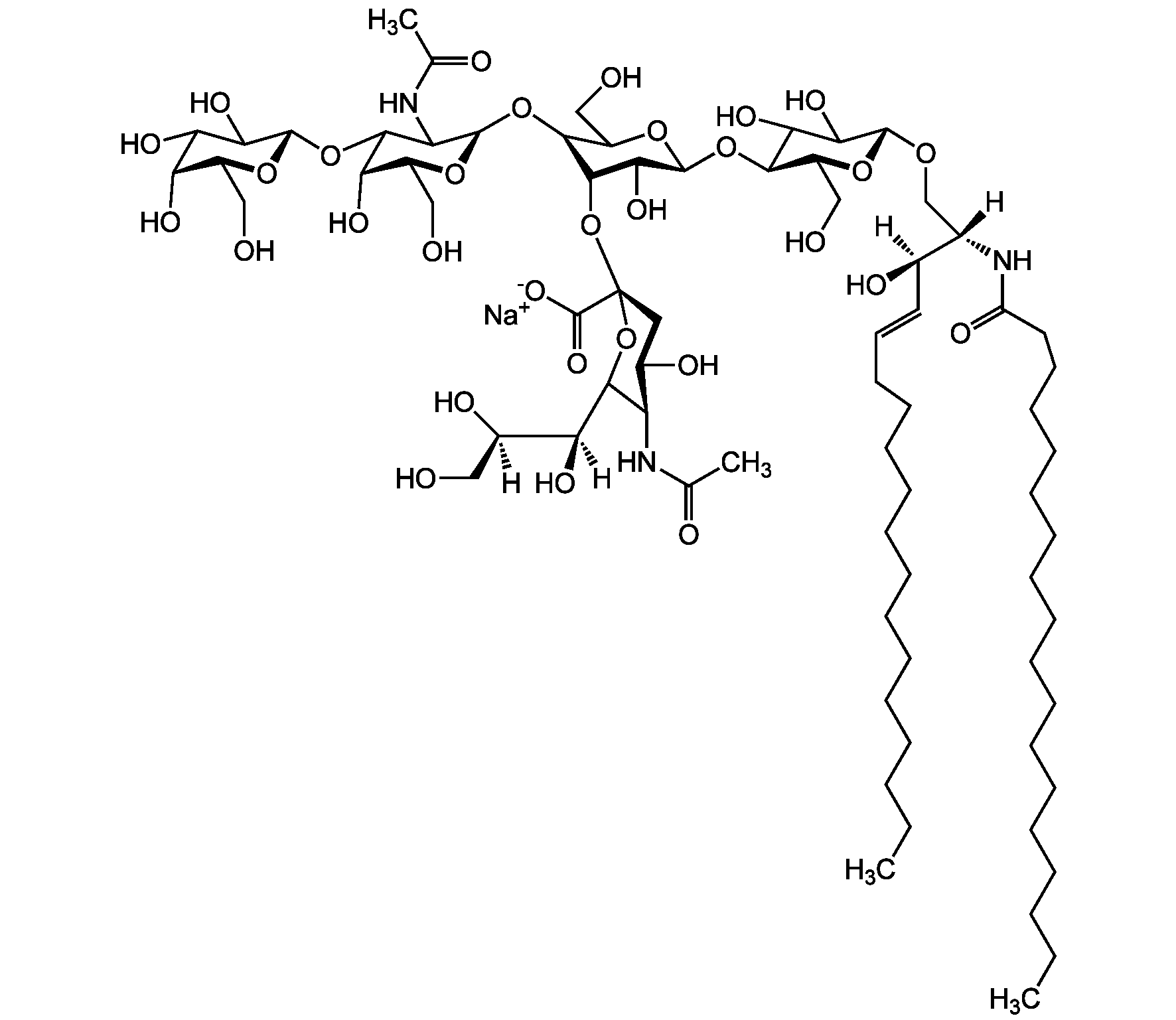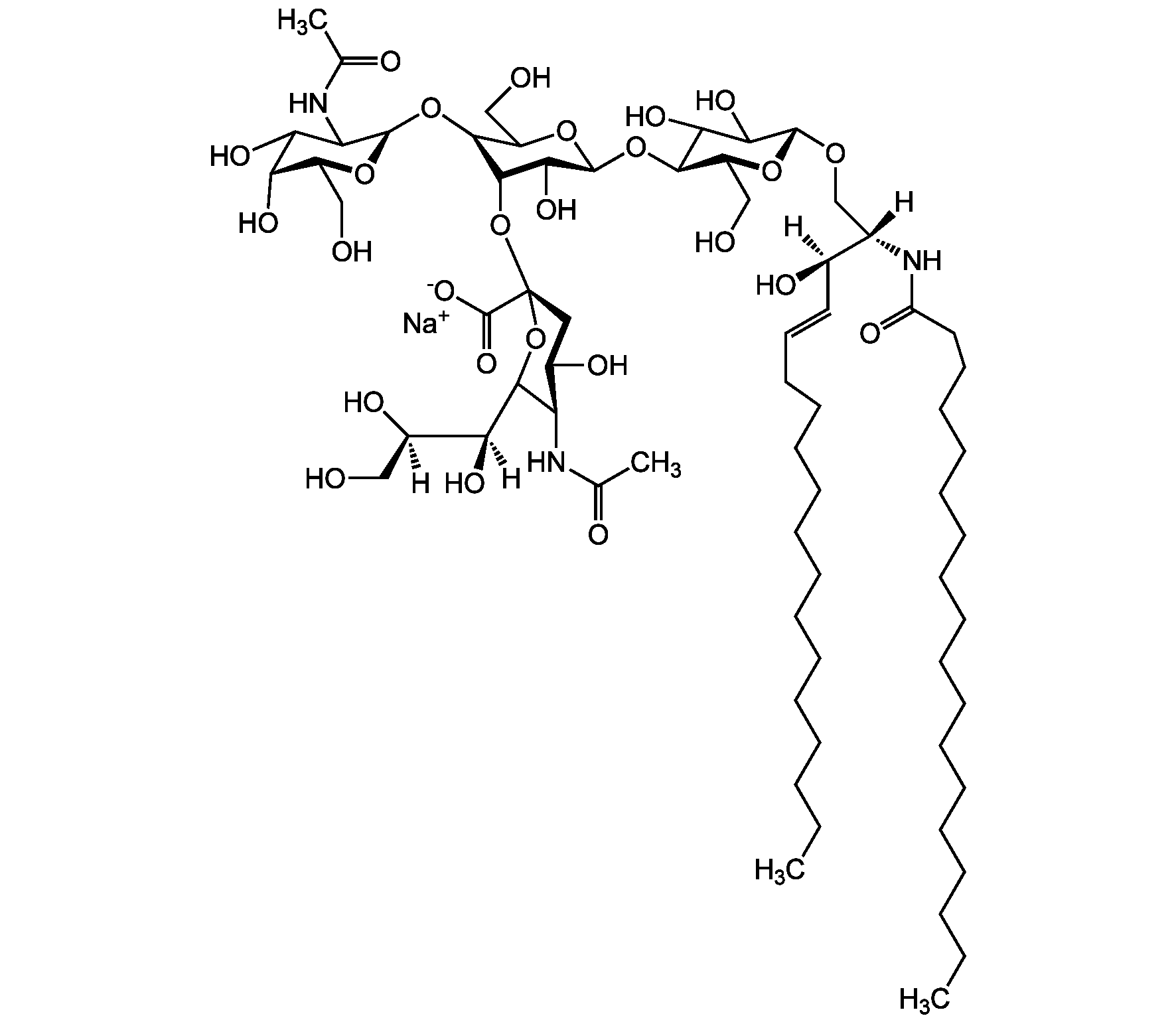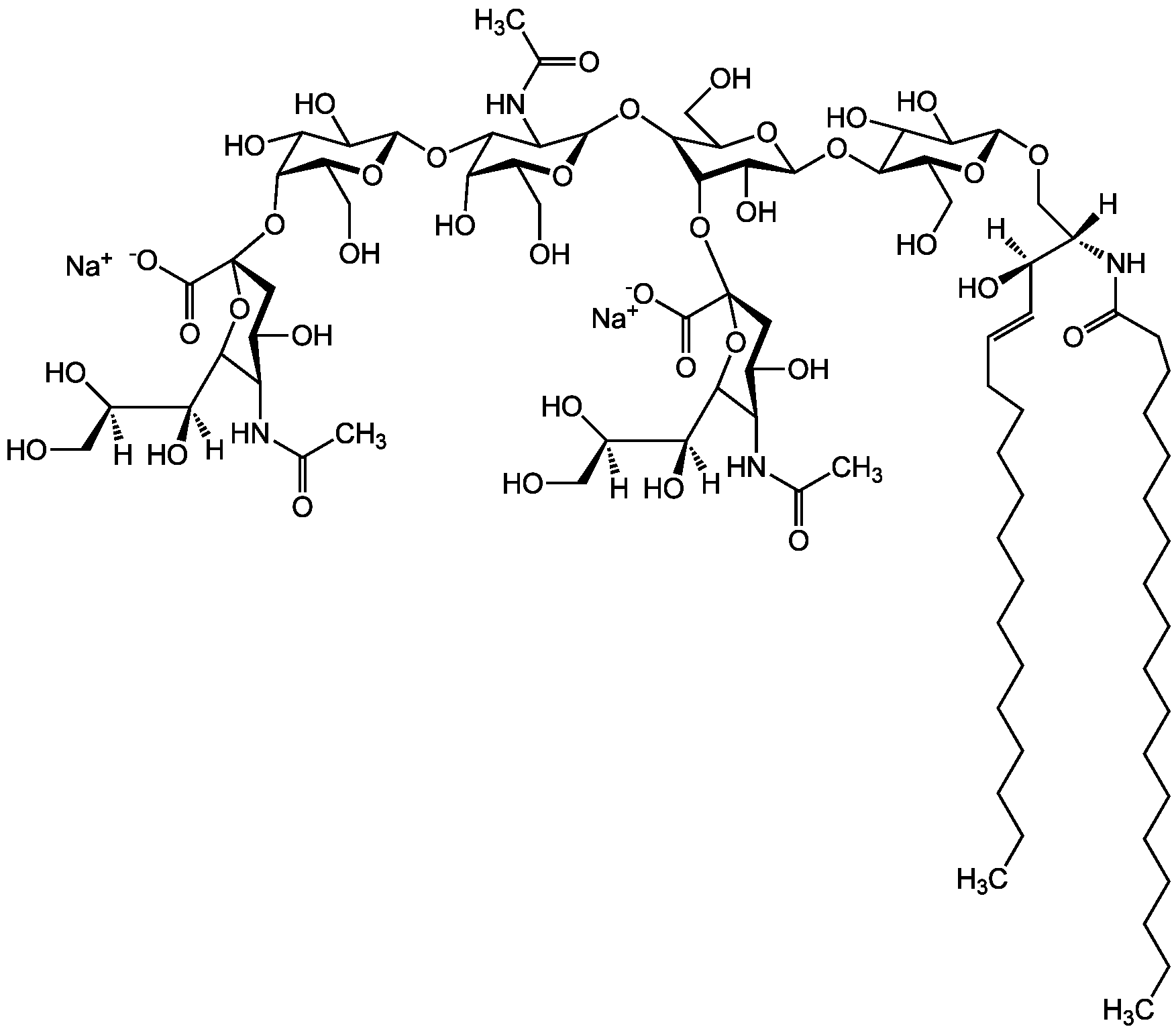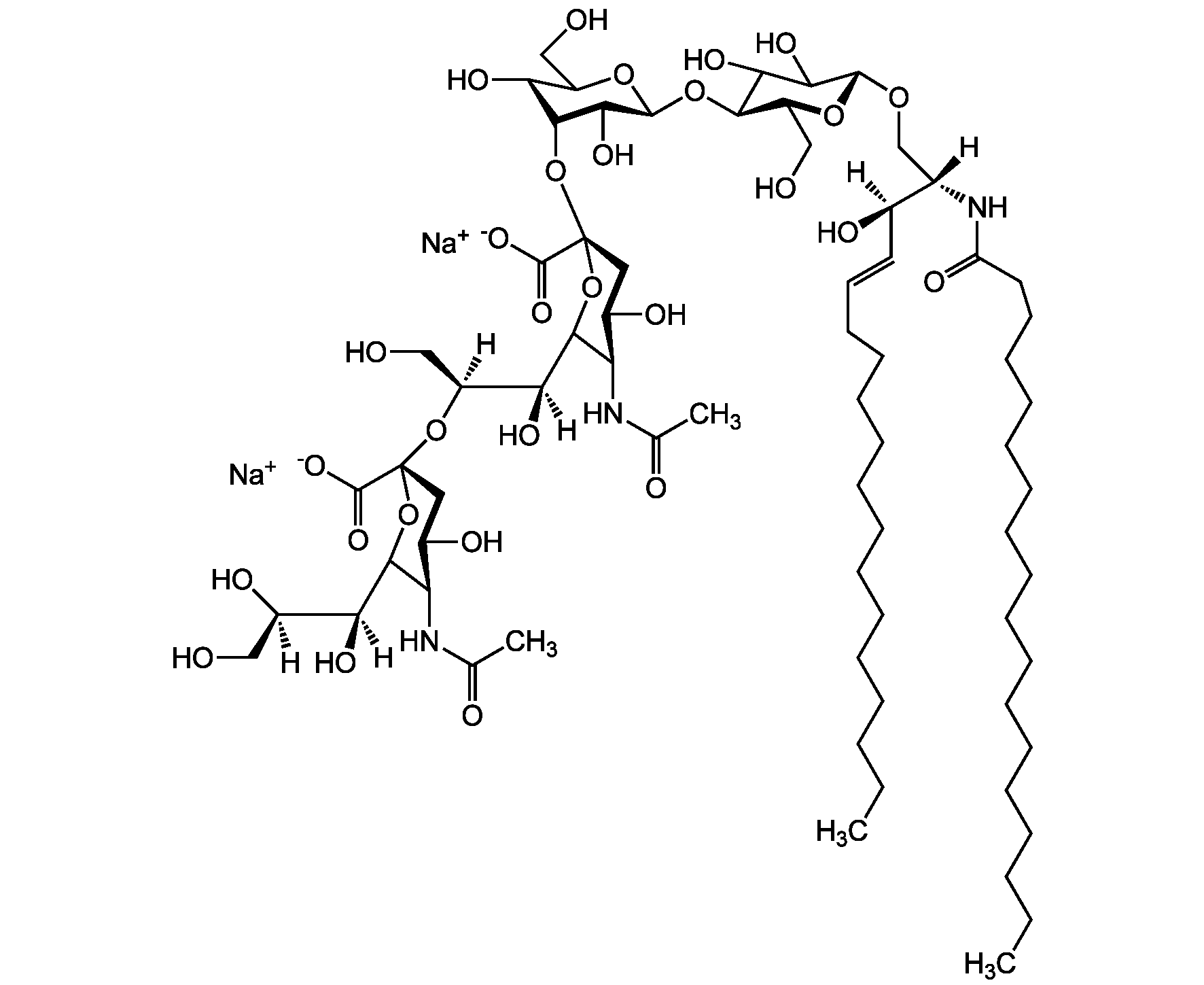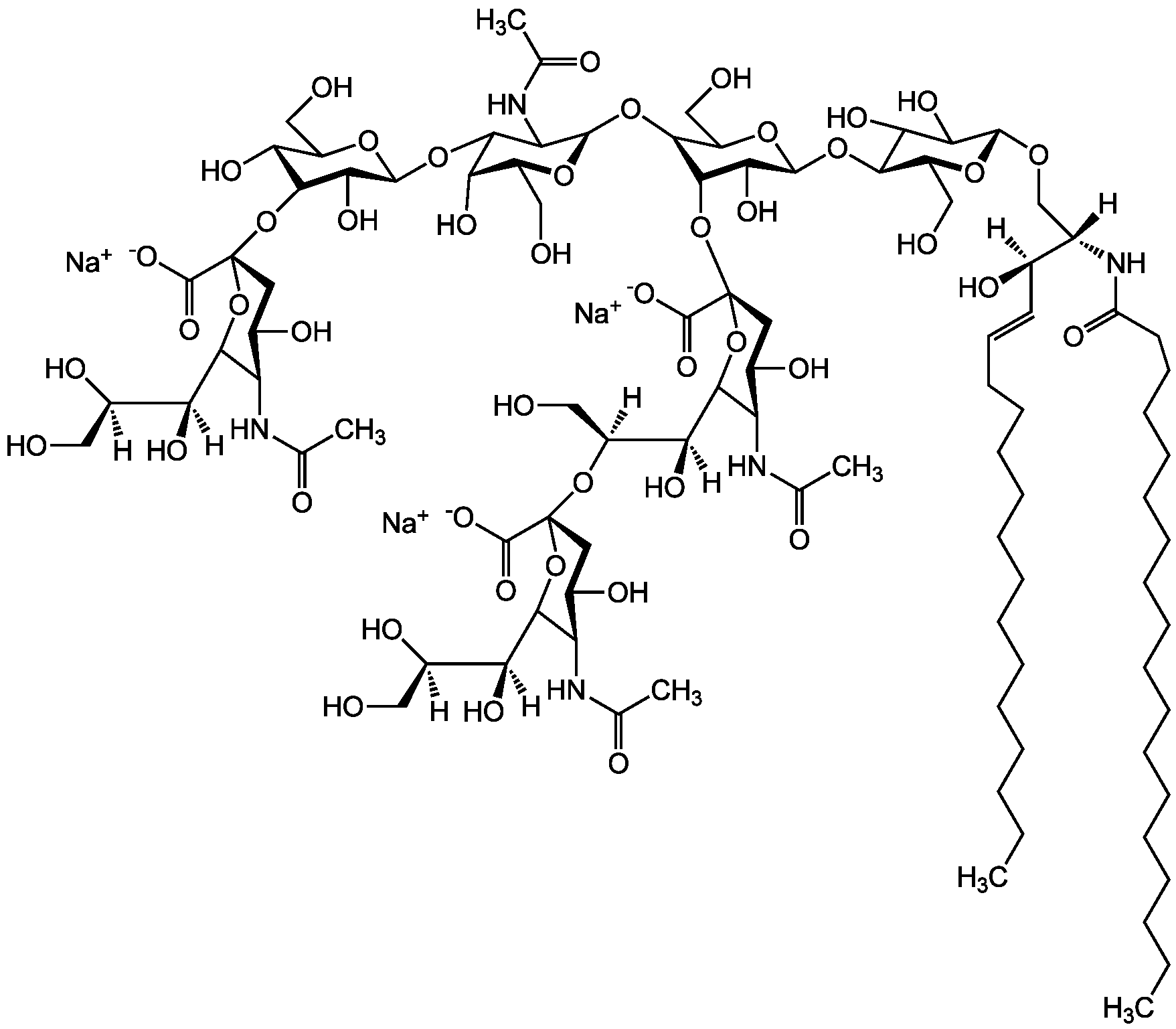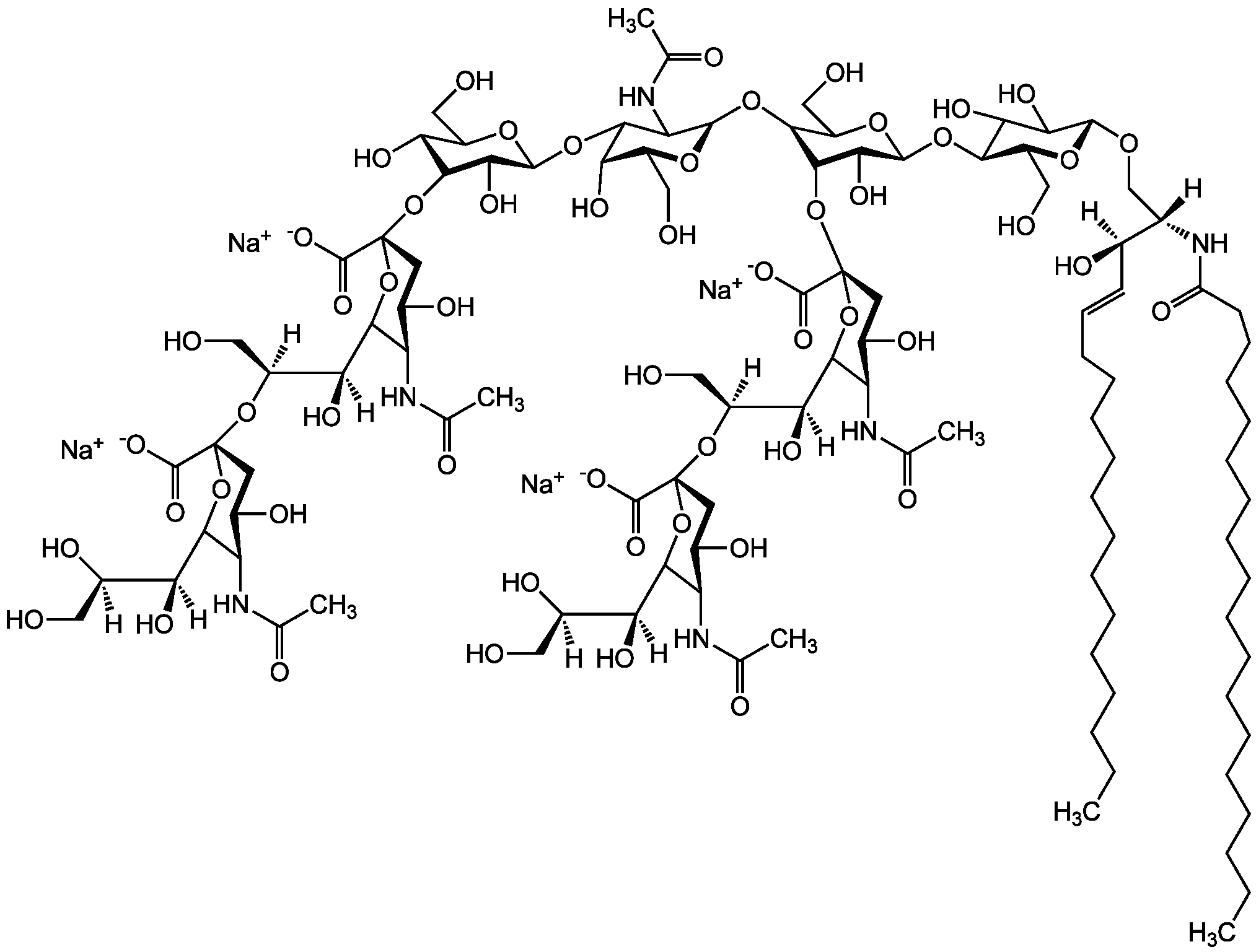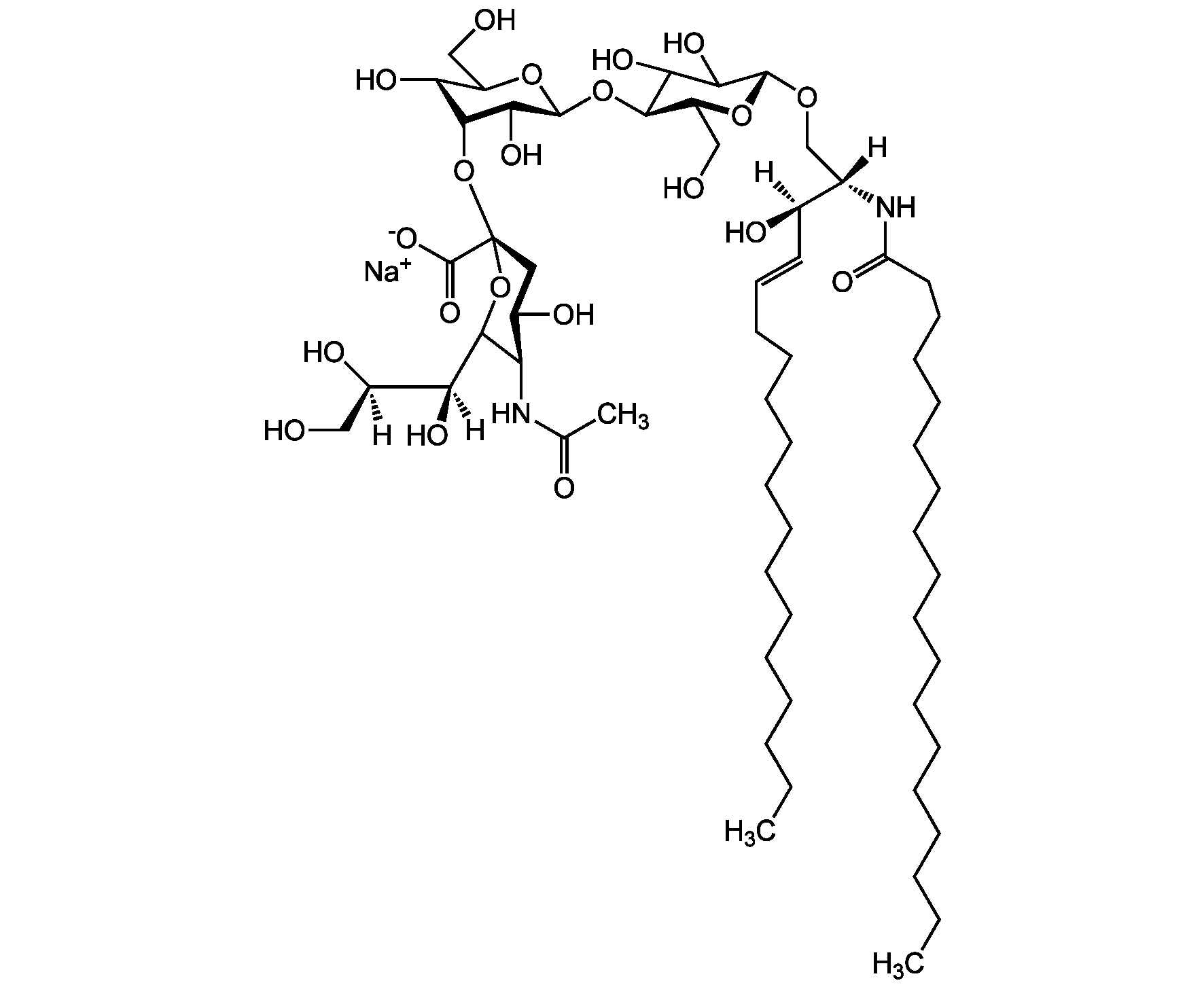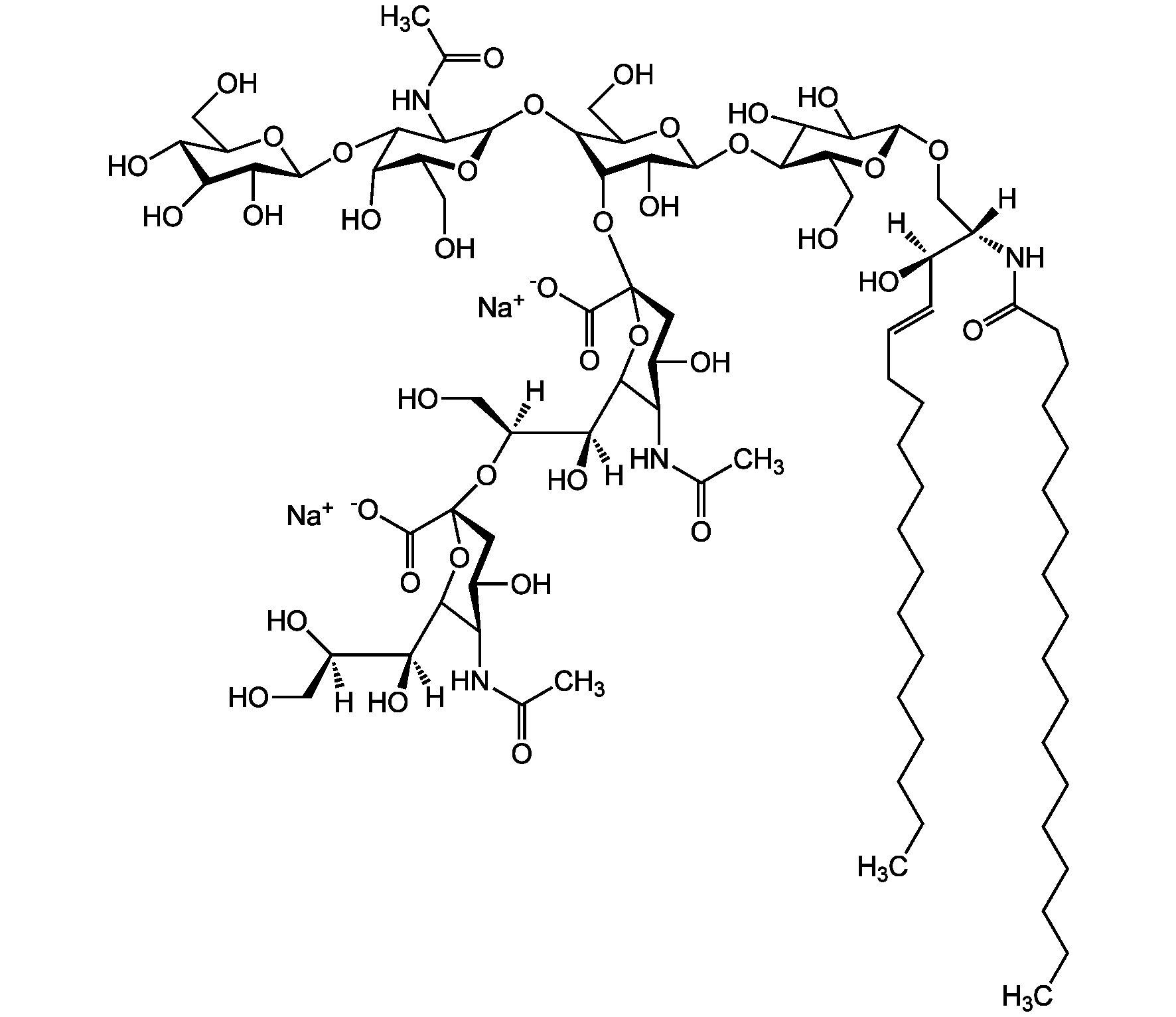
Chemical Structure
Ganglioside GD1b . disodium salt (bovine brain)
AG-CN2-9004
CAS Number19553-76-5
Product group Chemicals
Estimated Purity>98%
Molecular Weight1836.1 . 46.0 (calculated on sphingosine C18:1 and stearic acid)
Overview
- SupplierAdipoGen Life Sciences
- Product NameGanglioside GD1b . disodium salt (bovine brain)
- Delivery Days Customer10
- CAS Number19553-76-5
- CertificationResearch Use Only
- Estimated Purity>98%
- Molecular FormulaC84H146N4O39 . 2Na
- Molecular Weight1836.1 . 46.0 (calculated on sphingosine C18:1 and stearic acid)
- Scientific DescriptionChemical. CAS: 19553-76-5. Formula: C84H146N4O39 . 2Na. MW: 1836.1 . 46.0 (calculated on sphingosine C18:1 and stearic acid). Isolated from bovine brain. Gangliosides are acidic glycosphingolipids that form lipid rafts in the outer leaflet of the cell plasma membrane, especially in neuronal cells in the central nervous system. They participate in cellular proliferation, differentiation, adhesion, signal transduction, cell-to-cell interactions, tumorigenesis and metastasis. The accumulation of gangliosides has been linked to several diseases. Ganglioside GD1b may act as a bacterial toxin receptor (tetanus, botulinus). High levels are found in gliomas and astrocytomas. It modulates protein kinase activities. In vivo and in vitro it is in equilibrium with the lactone structure. - Gangliosides are acidic glycosphingolipids that form lipid rafts in the outer leaflet of the cell plasma membrane, especially in neuronal cells in the central nervous system. They participate in cellular proliferation, differentiation, adhesion, signal transduction, cell-to-cell interactions, tumorigenesis and metastasis. The accumulation of gangliosides has been linked to several diseases. Ganglioside GD1b may act as a bacterial toxin receptor (tetanus, botulinus). High levels are found in gliomas and astrocytomas. It modulates protein kinase activities. In vivo and in vitro it is in equilibrium with the lactone structure.
- SMILES[Na+].[Na+].[H][C@@](O)(CO)[C@]([H])(O)C1O[C@@](CC(O)[C@H]1NC(C)=O)(O[C@@]([H])(CO)[C@]([H])(O)C1O[C@@](CC(O)[C@H]1NC(C)=O)(O[C@@H]1C(O)[C@H](O[C@H]2C(O)C(O)[C@H](OC[C@]([H])(NC(=O)CCCCCCCCCCCCCCCCC)[C@]([H])(O)\C=C\CCCCCCCCCCCCC)O[C@H]2CO)OC(CO)[C@@H]1O[C@H]1O[C@@H](CO)[C@H](O)C(O[C@@H]2OC(CO)[C@@H](O)[C@H](O)C2O)C1NC(C)=O)C([O-])=O)C([O-])=O
- Storage Instruction-20°C,2°C to 8°C
- UNSPSC12352200

